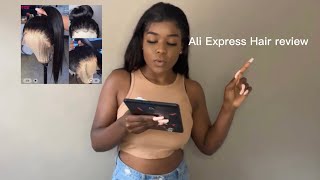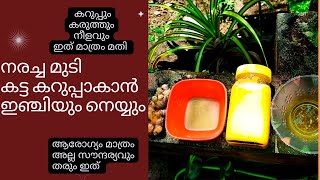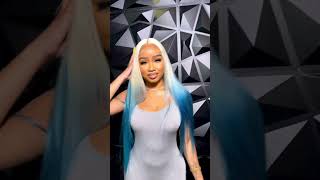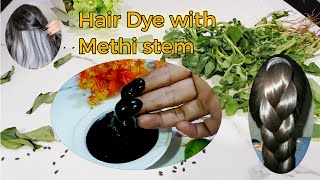How To Draw Hair Tutorial: Drawing Realistic Black Hair
- Posted on 10 December, 2018
- Trending
- By Anonymous
I go over the exact colors I used, as well as the techniques I use to create realistic hair in colored pencils
Materials I used:
Strathmore Bristol smooth 300 series: https://amzn.to/2v2wVKK
Faber-Castell Polychromos colored pencils: https://amzn.to/2vhZAKX
Colors:
1. White
2. Cold Grey II
3. Dark Indigo
4. Dark Sepia
5. Black
From the Faber Castell Polychromos 120 set
Music Credited to Bensounds.com
"Once Again"
"Adventure"
"Photo Album"
Amazon links are affiliated links.
Follow me on
Instagram: https://www.instagram.com/cates.art/
Facebook: https://www.facebook.com/caties.art/
#drawingrealistichair #howtodrawhair #learningtodraw
Hi everyone I'm back with another hair tutorial and this time we're focusing on black hair. I chose this black hair because I wanted to show how to draw jet-black hair and how to make it look three-dimensional like it's popping out of the page, and I also wanted to break the myth that using a black pencil will make your piece look flat. So I have new tutorials coming out in the next couple of weeks. So if you're interested please hit the subscribe button, so you don't miss out the colors I'll be using are on the left of your screen and let's get started. So the first thing you want to do is make sure you have an accurate sketch and make sure you lighten up your pencil line, so they don't show through the color pencils. Since most of this, drawing will be done with a very dark pencil that won't really matter as much unless you mapped out where your highlights are going to be. In that case, you really do want to make sure those lines are lightened up. So I started at the bottom and typically I try to work from top to bottom, but the bottom portion of the hair seemed less intimidating. So I started there and I'm working my way up and I'm just making sure I'm preserving my highlights, because they're so important in making a piece look three-dimensional, because this piece is going to be so dark. Those highlights are really going to make this piece pop. So, as always start with a light hand making strokes in the direction of the hair. So now I'm working on the underside of the hair, where the hair curls and this area is going to be darker because it has a lot of shadow. So I'm darkening that small area up right away and I'll continue to darken up the other parts of the hair that I already started. Now that I have established the direction of the hair and the highlights notice that I'm working on one portion of hair at a time concentrating on just one section of hair at a time not only makes it more approachable. But it helps in focusing on values and details. Now I'm just arcing up some of my pencil lines with my black pencil, so I don't lose them before starting a new section and then I'm preserving the highlights. By going over the area with a white or a cold gray pencil, then I'm going in with my black pencil using a light hand to establish the direction of the hair before darkening further, and then I'm going back and forth between the black cold gray or white Pencil and building layers so I'll continue building the layers until I get a smooth finish so now I'll repeat the process for the second half of that section, I'm still using quick hair like strokes in the direction of the hair, even though I'll be darkening it to The point where you won't even see most of these strokes, only a few will show through and that's what we really want, because we don't really see each individual hair even in our daily lives. We see hair in clumps, so we're going to just suggest that there are a lot of individual hairs by continuing to make these hair like strokes. So now I'm starting on a bigger section of hair, continuing the method I've been using for each clump and I'm making strokes from either end of the clump to the middle. In order for this curl to look like it's popping out of the page, we need to have the highlight in the middle. So now I'm going to keep darkening this section, while reserving the middle part for the highlights, by using my white, pencil and I'll go back and forth between the black and the lighter colors, like cold gray, which has a blue tint to it to build layers. You may also notice that I use the dark indigo to go over some of the highlighted areas and that's because the highlights for this dark subject isn't actually going to be white. We need to blend from black to dark blue, which is the dark indigo to a lighter blue, which will be a mixture of white gray and dark indigo. Then I'm using my gray pencil to map out the direction of the hair on the underside of the curl before going in with my darker pencils. So now I'm just refining that section, the underside of the hair and making it darker and then I'm going to start mapping out where the highlights will be in the next clump of hair. So after darkening, the underside of the hair, where the shadow will be I'm moving on to a larger clump again, I'm using the cold gray pencil to preserve the highlight, because I already know that the white is going to be too late. For this highlight - and I know I'll be going over most of these highlights with the dark indigo anyway, so I just keep refining the clumps. I already did making them darker now, I'm starting on the biggest clump and what I consider the focal point of this piece and again I'm using the same techniques. I did for the smaller clumps I'm using hair like strokes, starting from the end and lightening my stroke as I get closer to the highlight and I'm making sure I preserve any other small highlights with my white or gray pencil here. I realize that my sketch wasn't really accurate enough or that it wasn't detailed enough. So I went in and I just started, refining the sketch a little bit more and I'm just identifying the important shapes or clumps of hair that I see in my reference photo that way. I can go in with my color pencil with a little more confidence now. Moving back to large section, using strokes going in the direction of the hair, now I'm using my dark indigo and I decided to use it because this is a big portion. That'S going to all be black, but because I want to try to avoid that flat. Look! I'M using it as sort of an undertone with the black. This will also help when I use the white pencil later in the darker areas to pull up some of the highlights to give those highlights more of a blue tint rather than a grayish tone. I'Ll also be using the dark indigo a lot in the highlighted areas to darken them up and give them color, and the reason I want to give them color is because this will help with the realism. So the amazing thing about highlights is that it picks up the color or colors of its surroundings, so believe it or not. The highlights are usually not gray. How I know what color to use in the highlights is by looking very closely at my reference photo, and it was clear in my photo that the highlights had a blue color to them. And, even though this goes against my idea of what color black hair should be, I've learned to trust more in what I see in my reference, rather than what I think I know, even if you don't draw realism or you're not interested in drawing realism. I personally think it's beneficial to understand how things really are, how light works and to trust your eyes, rather than going by how we think something should be drawn, and once you understand the rules, it can then later be translated or just be useful for creative drawings. That aren't realistic. So now I want to talk a little bit about erasing so when you erase try to avoid wiping away the eraser shavings or the color pencil bits with your hand or just wiping your hand over your drawing in general, even though they're colored pencils, the artist brand Color pencils can smudge not a lot but enough that you'll notice, so you don't need anything, fancy or expensive, I'm just using a basic two inch brush. That was very cheap. I think I paid about a dollar for it at a hardware store, but try to get a brush that has soft bristles. You can also use glassine or a piece of paper under your hand, while drawing to also prevent smudging. So now I'm starting a new section of hair and I'm establishing the direction or the movement of the hair with a few strokes. And then I go in with my white pencil to preserve the highlighted areas. Then I go in with the dark indigo using a light hand, so I want to use a light hand for two reasons, one because I'm not sure how dark I need to go in that area with that color considering it is a highlight and because I want To be able to add many more layers, I'm also very generous in the size of the highlighted area at first, because I didn't map it out in my initial sketch, which you can do before going in with color pencil. So then I'll shade a larger area while slowly adding strokes and darkening around that highlighted area, closing it in more and more, and this will give me more time to judge where the highlights are in that section, as well as building layers to create texture. With my strokes, you'll see me basically use the same techniques in the next section, so this whole section is very dark and I don't see any individual strands in my reference photo, so I'm just coloring it in and I'm still over, compensating the highlighted area while slowly Building layers, so if you want to practice something like this, but you don't want to spend a lot of time, you can simplify it further by just doing a small strand of hair similar to this one. I would draw the shape out first with a light pencil like I did in my sketch and then try some of these techniques out so now. Moving on to the larger section and again I didn't feel like my sketch was detailed enough within that clump. So I'm just going in and redefining a few of the lines that'll help guide me before I go in with my color pencils and this time I'm going to be going back and forth between two of the clumps of hair, because this larger clump of hair is Actually curling around some of the straighter hair and there's a break in the bigger clump, where you can actually see some of that straight hair behind it. So I'm going to be going back and forth between these two clumps to define that you you you you! So I just wanted to summarize and give you kind of a breakdown of the most important tips. So the first thing we need to do is we need to establish where the highlights will be. This is what's going to give your hair at that three-dimensional. Look - and this is why value is so important. Values are your lights and your darks, and we need those highlights in order to give the illusion that the hair is popping out of the page. We also need to figure out what color those highlights are going to be because they're certainly not going to be white and believe it or not, they're, usually not gray either. Instead, the highlights reflect the color or colors of its surroundings, and doing this not only makes the piece more realistic, but it also makes your piece more interesting to look at next. You want to have an undertone the undertone I use a lot under black is dark. Indigo, but it can be brown, which is another popular undertone for black. The reason the undertone is so important is because it helps in avoiding that flat, look by adding another color. So in this case, I used blue, which is the dark indigo, and this will help me create more value and a more interesting piece. I don't know about you, but I know I'm more drawn to pieces with blues purples, reds orange yellows and greens, and not so much to white black browns and grays, and when you do go over the piece with a white pencil, it will give more of that. Colors tint, to the highlights an easy way to know what color your highlight should be is to look closely at your reference photo. Sometimes i zoom into the highlighted area, so I can see what color is present. Even if the highlight looks white put a white piece of paper next to it and see if it really is white, usually there's at least a tint of another color present, and this will help you determine what color you should use and, lastly, always make sure you Have a reference you and now I'm just cleaning up the area surrounding the drawing with a kneaded eraser to pick up any light smudging before adding in the flyaways and other details. So now I'm adding the fine hairs around the large clumps, and this is one of those small details that really take the drawing to the next level. And basically, all I'm doing is lightly. Adding fine strokes around the clumps of hair and even though I don't try to draw each individual hair exactly as I see it in my reference, I still check my reference photo to see how the flyaways behave around each clump and I try to copy back another Trick is to have lighter flyaways and darker flyaways, and what this does is it makes it appear as if some of the hair is closer and others are farther back. This is one of my favorite tricks, because it's so easy and it really adds to the realism. So I'm using the dark sepia for my lighter flyaways and black for my darker flyaways I'll, also use the black to darken some of the lighter flyaways, where there's shadow or wherever they appear darker in my reference photo. So I'm using the dark, sepia and I'm lightly. Adding these fine hairs make sure your pencil is sharp when adding the flyaways and take your time also, there are some flyaways that are a little thicker that could be considered small strands of hair, where I use the same techniques I do for the flyaways, but for These small strands I go over them several times to make it appear thicker than the other flyaways. You also want to make sure you have flyaways within the hair, and I do that by using my white pencil again make sure your pencil is sharp and I look at my reference photo to see where these flyaways are located. But again, I'm not copying my reference photo exactly for these fine hairs, I'm just checking to see where they are and how they behave within the hair. So as I get to the end, I just start tweaking and basically I'm comparing my drawing to the reference photo and seeing if there's anything else, I need to change or add, and I continue doing that until I'm satisfied. Sometimes I even wait until the next day and then I look at my piece and the reference with fresh eyes and I make any necessary changes before calling it done and that's it if this tutorial was helpful, please give it a like, and if you want to See more, please subscribe if you have any questions or suggestions or ideas for a video you would like to see. Let me know in the comments I look forward to talking with you and I'll see you in the next video you





Comments
Catie Sheeran Art: Hi Everyone! I Hope this tutorial is helpful. Please, if you have any questions, suggestions or ideas for a video, let me know in the comments! I like to know your thoughts and opinions so I can help you and make videos you want to see.
DjaRodney Art: Wow, really impressive and great explanation
Barefoot Bushcraft: WOW! The hair looks really amazing! I know how hard that is to draw and you did it beautifully :) I hope you have a great holiday season and a happy new years! All the best for 2019, I hope it's a good one for you :)
Manga Mike Lee: This was fantastic! You're work is stunning, thank you for the tutorial
Yehoshua Shellim: Your hair drawings are fabulous! They're my biggest struggle.... Really nice video you deserve more attention!❤️
Pyrography Made Easy: Hi Catie, as usual you provide a lot of information in your tutorials. I like how you put contrast or highlights in the hair, but make sure to explain that they shouldn't be so bright (or white) that they seem fake. Anyways, I thought the strands of hair turned out very realistically. Always interesting and entertaining to watch your videos. Brenda
Sa Shaya: Amazing!!! Your hair drawings look so real! I thought it was a photo. Thanks for the video
machatero1: Amazing! So much skill!
XDreamyMSPX: You really deserve more Attention!!
Yana Vallie: It looks just like a photograph
Discoveringbands by Michael Nagy: Wow you have amazing skills! You have my support #123 here :-)
zano fashion art: Amazing art shades
bicali_pierfishing🎣: Hello sweetie happy Monday I'm so happy and excited to see your beautiful hair tutorial you are amazing
Samrat Art: Super
Tejaa Artists: lovely
Ist mir Wunst: It looks like real hair
lovelyangel4ever: Omg awesome